Revitalization and External Support JCN Report
Posted on October 01, 2015
JCN Report
Understanding the State of Tohoku Today to Support Recovery Efforts throughout the Country
The Great East Japan Earthquake resulted in damage to the region’s symbols of vitality, including many of the markets, shopping streets, assembly halls, community centers, processing plants, gymnasiums, schools, and child welfare facilities where people once gathered or worked. Many people, mostly the younger generations, left home (some temporarily) in search of employment, or to find an environment suitable for raising children or finding peace of mind. This has led to the sudden escalation, and worsening, of problems such as population outflow, a declining birth rate and aging population, the hollowing out of the economy, and the weakening of communities – problems that were already severe even before the disaster.
For people to live in the face of such harsh conditions, it is necessary to rebuild a community environment that can offer not only welfare services and safety nets, but also non-profit and for-profit activities, such as NPOs and venture companies, and the jobs and spaces that they create, where people can enjoy full and peaceful lives.
Support measures needed to encourage local revitalization
The government has already been adopting local revitalization measures for more than forty years, including establishing roadside stations, hometown recreation projects, community development personnel training, a system in which taxpayers can choose to divert part of their residential tax to a specified local government, and the promotion of the sixth industry. In 2014, the Abe regime came out with “regional revitalization” measures and a law to create communities, human resources and jobs.
In Tohoku, many new systems to promote local revitalization have emerged since the disaster. Huge amounts of capital are being invested, for example, into a system that encourages more strategic industry development and resource pooling by unionizing and incorporating individual farmers and fishermen (group subsidies), as well as a system that works toward local revitalization and reconstruction through the ideas of NPOs and businesses (projects to support a New Tohoku). To make full use of these projects and produce the best results possible, however, a medium-to-long term vision and the human resources able to carry it out are essential.
Key elements: People, interaction and chemical reaction
Looking back at past government initiatives nationwide, it is clear that local revitalization cannot be achieved with money, buildings and projects alone. Having observed the efforts in the disaster-stricken areas over the past four years, we believe that the most vital element for local revitalization is people: people who want to help do something or contribute to the community. The impact of one person who feels this way on a community as a whole is bigger than you might expect – if such people gather together and make connections, new ideas and possibilities can emerge, and communities can grow.
Future issues
Support in areas such as these below is considered necessary for local revitalization:
1. Rediscovering and rebuilding the region’s attractions
Some people believe that to revitalize the coastal regions crushed by disaster, a hard approach is needed, and that something new must be created to attract people. Local sources of attraction (histories, people, and places that are unique to the area) can surely be found. The first step is for the local residents to rediscover these local attractions and regain pride in them, after which they must find ways to present them to people in an accessible way.
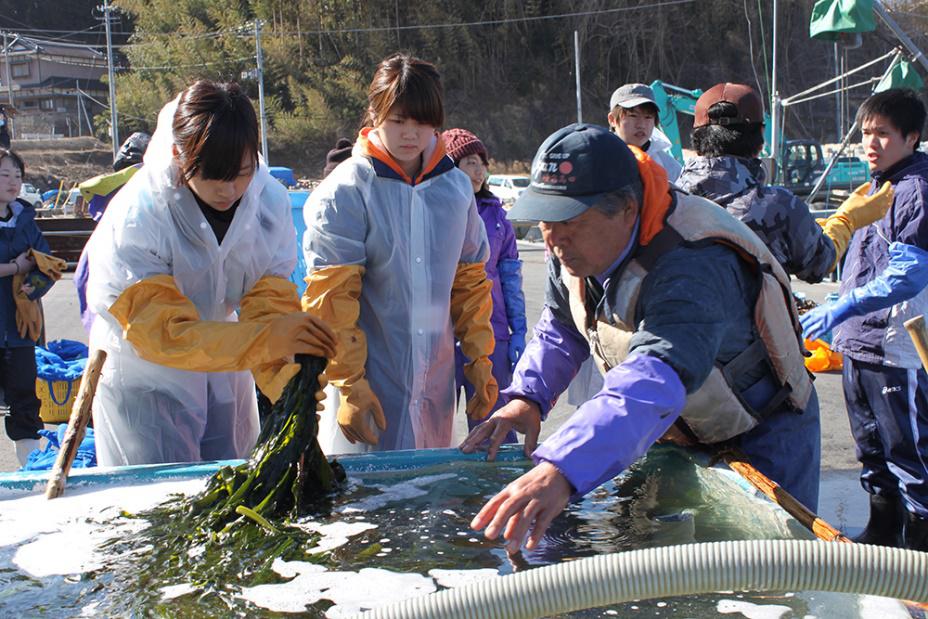 NPO SET creates the Change Maker Program, in which local residents and outsiders collaborate for the good of the community. (Takada City, Iwate)
NPO SET creates the Change Maker Program, in which local residents and outsiders collaborate for the good of the community. (Takada City, Iwate)
2. Creating locales that attract consumers and tourists
Many of the markets and shopping streets – where people once gathered and shared information – were destroyed by the disaster. Not only were these the places where local residents had obtained fresh seafood and agricultural produce, but they had also served as tourist attractions and symbols of the community spirit. Markets and shopping streets are also important in ensuring the income of business people and individual proprietors involved in the primary industries (mostly farmers and fishermen), and guaranteeing jobs for the locals.
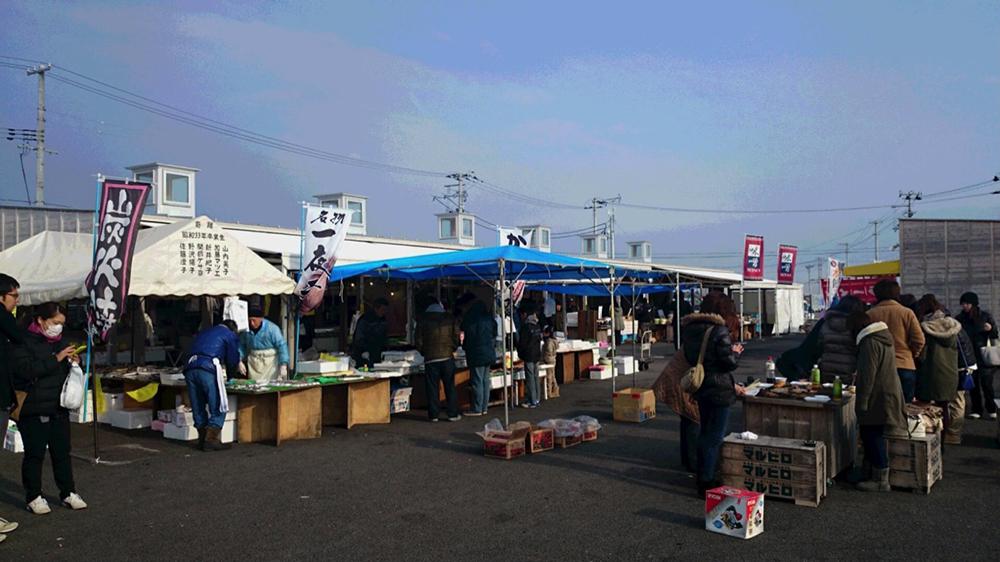 Market selling fresh seafood BBQ early in the morning (Miyagi)
Market selling fresh seafood BBQ early in the morning (Miyagi)
3. Reviving the primary industries and building connections with consumers
Fishing and farming, the key industries in Tohoku’s coastal areas, were badly hit by the disaster. Furthermore, in Fukushima, radioactive contamination and related rumors have made it even more difficult for the primary industries to recover. Reviving fisheries and farming through various efforts such as undertaking thorough food inspections and providing full disclosure on food safety, as well as building ties with consumers, are key to the recovery and revitalization of the region.
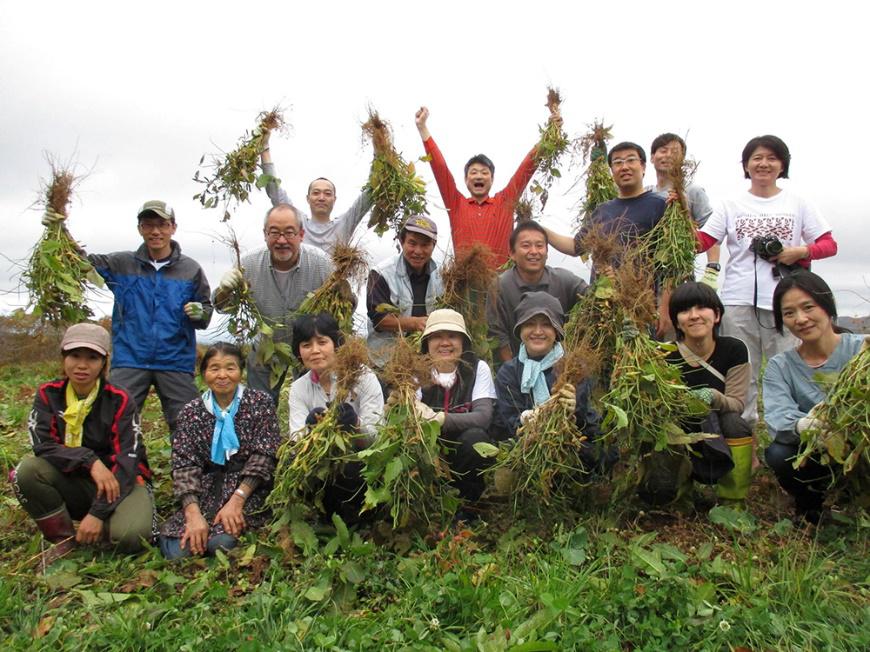 Community building through organic farming: Agricultural experience for business volunteers.
Community building through organic farming: Agricultural experience for business volunteers.
4. Creating spaces that generate business and civil society activity
It is no exaggeration to say that the most crucial factor for locals in the coastal areas that were economically devastated by the disaster has been the creation of attractive jobs. The local people must prepare to resume business, search for new business opportunities, draw in people from outside the region to discover new opportunities and launch businesses, launch non-profit activities for the communities, and create spaces where the people involved in these efforts can share information and stimulate each other with their ideas.
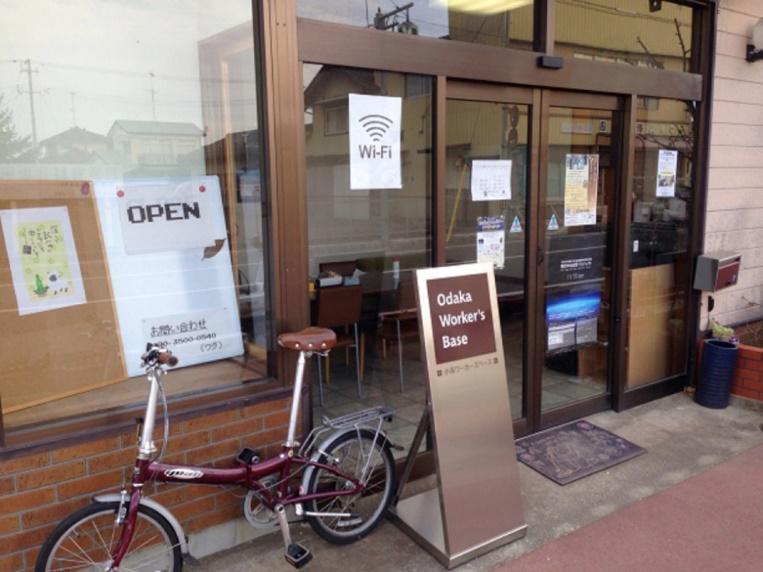 Community rebuilding in areas affected by radiation: A new co-working space opened in Odaka Town (Soma City, Fukushima)
Community rebuilding in areas affected by radiation: A new co-working space opened in Odaka Town (Soma City, Fukushima)
5. Reviving identity
The members of these communities have been physically separated by the disaster, and it has become difficult for them to carry on not only the events that once gave local residents their identity, such as the traditional arts and culture that attracted visitors to the area, but also to maintain actual structures such as local shrines and temples. Reviving local festivals and other events will bring back a sense of local identity, leading to enthusiasm and energy for new challenges in the lives of each individual.
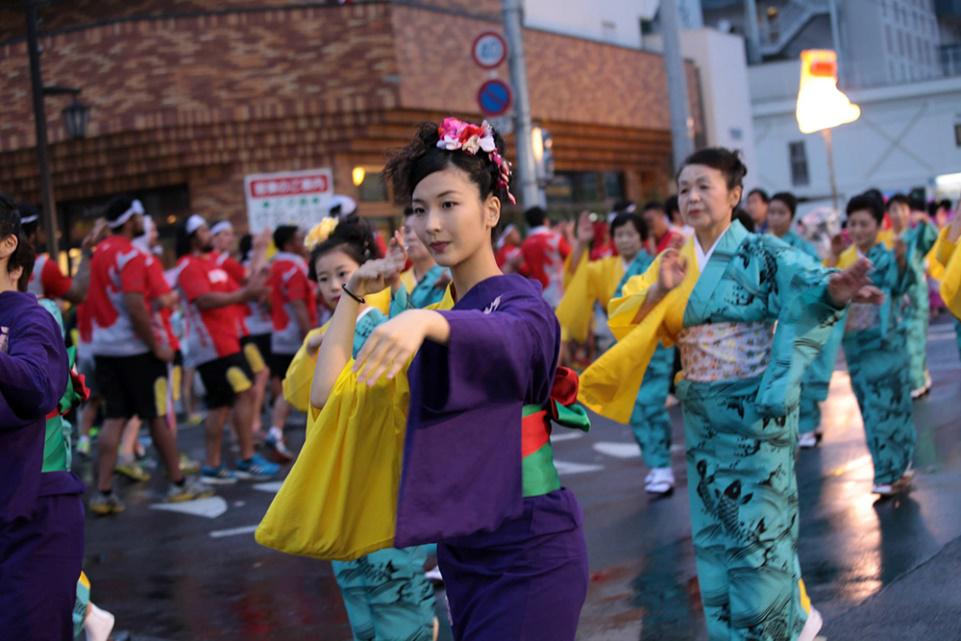 Recovering the Community’s Identity: Facilitating local bonds through traditional festivals (Kamaishi City, Iwate)
Recovering the Community’s Identity: Facilitating local bonds through traditional festivals (Kamaishi City, Iwate)
This report was a part of JCN Report Vol.3 and originally published in March 2015. JCN Report has been created by JCN (Japan Civil Network of Disaster Relief in Japan) to spread the understanding the state of Tohoku today to support recovery efforts throughout country.
About JCN (Japan Civil Network of Disaster Relief in East Japan)
Recent Articles
- Shared solutions, stronger communities: Social economy and social innovation in Europe and Japan
- NPO support for disaster victims: Key discussion points
- Beyond support: Fostering genuine dialogues
- Reconsidering the significance of public comments
- Towards a society where children want to embrace life
- The Evolution of Philanthropy: Five approaches shaping contemporary practice